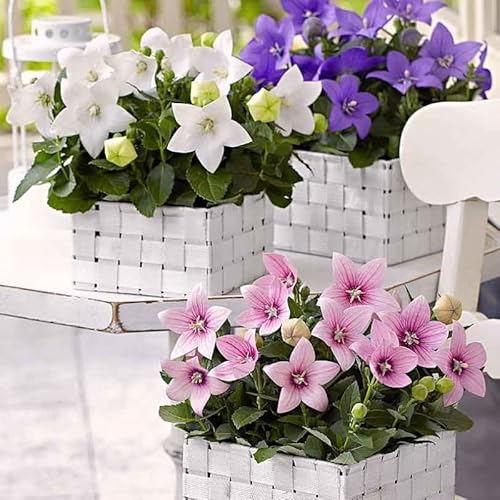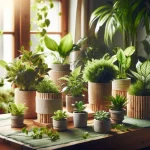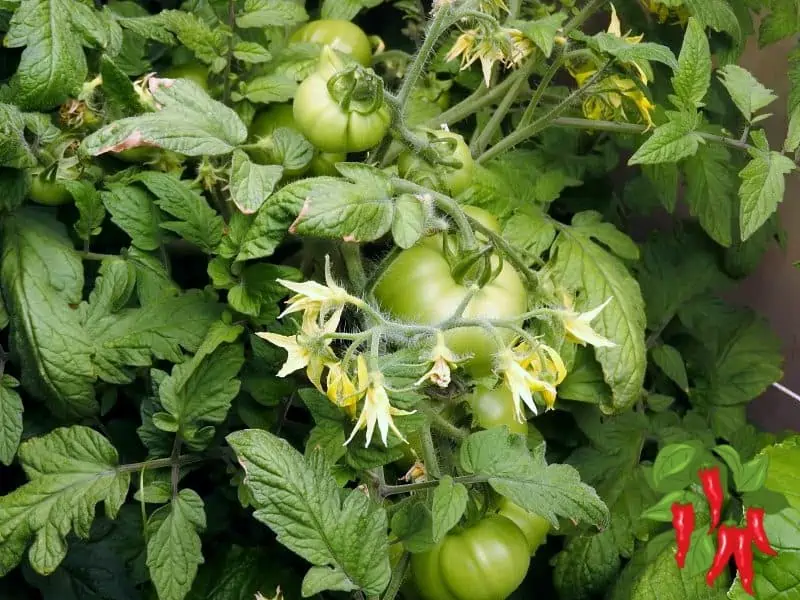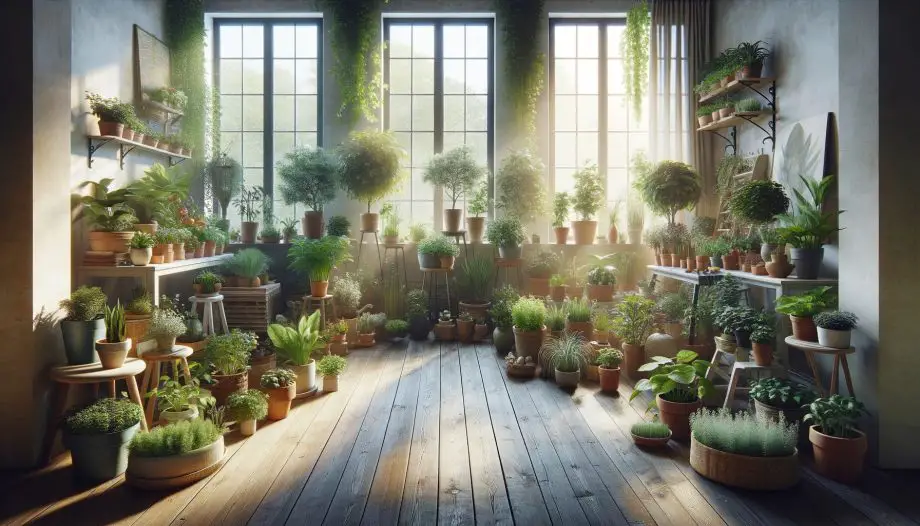This post may contain affiliate links. If you buy something from one of our links we may earn a commission. Thanks
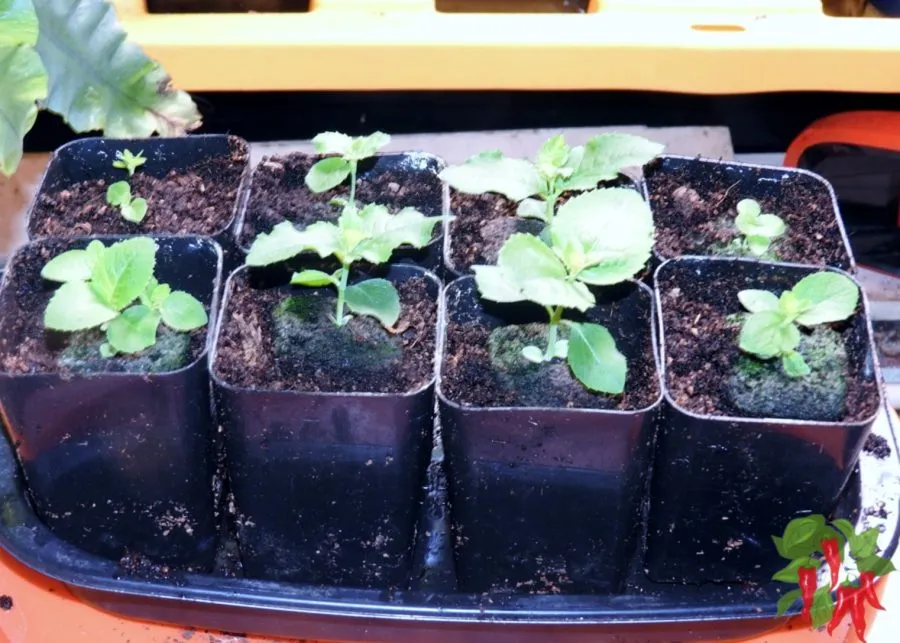
How to Grow and Care for Balloon Flower Seeds
How To Grow Balloon Flowers from Seed
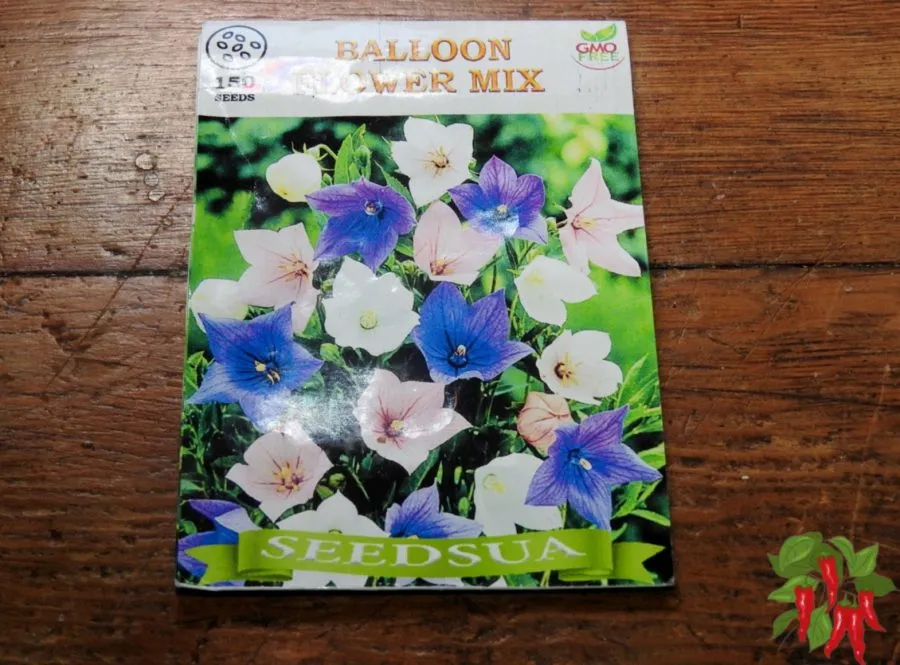
Ever wondered how a little seed can bring a burst of magic to your garden? Balloon flower seeds are your ticket to whimsical, star-shaped blooms that pop from puffy buds.
These perennial favorites are hardy, colorful, and surprisingly easy to grow. With just a bit of guidance, you’ll turn a packet of balloon flower seeds into a backyard full of charm.
Whether you’re starting indoors or sowing directly outside, this guide will show you every step to success, so you can enjoy blooms that delight season after season.
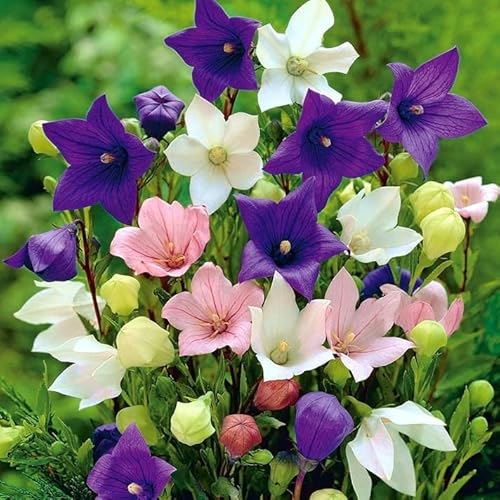
Seeds Balloon Flower Mix (Platycodon Chinese) Perennial Flowers
My Experience Growing Balloon Flower Seeds Indoors
Well, howdy everyone! I recently started an experiment with balloon flower seeds, and I thought I’d share my experience.
These seeds are said to need a cold stratification period before germinating, but I decided to test a batch right away on a damp paper towel.
To my surprise, some sprouted without that extra step, which means they may have already been pre-treated by the supplier.
Once they began to sprout, I carefully transferred them into root plugs and eventually potted them into small containers.
Out of sixteen seeds, I ended up with eight healthy seedlings, about a 50% germination rate.
Since balloon flowers are hardy perennials, I’m debating whether to plant them outdoors now or overwinter them inside to give them a stronger start.
Either way, I’m excited to see which colors I’ll get when they finally bloom, likely a lot of blues, but maybe some pinks and whites mixed in.
Growing these has been a fun journey so far, and I’ll be sure to share updates as they mature.
If you’re thinking about trying balloon flowers from seed, I’d say go for it. They’re charming plants with a unique way of starting out like little balloons before bursting open into beautiful star-shaped flowers.
Why Grow Balloon Flower Seeds?
Growing from seeds is not only cost-effective but also rewarding. By starting balloon flowers from seeds, you’ll enjoy the full gardening journey from tiny sprouts to stunning blooms.
Plus, seeds allow for more variety and genetic diversity compared to nursery starts.
See Balloon Flower Seeds on Amazon
What Are Balloon Flowers?
Balloon flowers (Platycodon grandiflorus) are perennials native to East Asia (China, Japan, Korea).
Their balloon-like buds swell before bursting into five-petaled, star-shaped flowers in shades of blue, pink, or white.
They grow between 1–2.5 feet tall, making them ideal for beds, borders, or containers. These hardy perennials are low-maintenance and return each year with minimal care.
Balloon Flower Plant Care Reference Guide
| Characteristic | Details |
|---|---|
| Common Name | Balloon Flower |
| Botanical Name | Platycodon grandiflorus |
| Native Habitat | East Asia (China, Korea, Japan, Siberia) |
| Plant Type | Herbaceous perennial |
| Growth Pattern | Clump-forming, upright habit |
| Mature Size | 12–24 in. tall, 9–12 in. wide |
| Watering | Moderate; keep soil evenly moist but not soggy |
| Light/Sun Exposure | Full sun to partial shade |
| Soil Type | Well-draining loamy soil |
| Soil pH | Neutral to slightly acidic (6.0–7.5) |
| Temperature | Prefers mild to warm summers; tolerates cold winters |
| Humidity | Average garden humidity; avoid prolonged sogginess |
| Bloom Time & Flower Color | Summer; blue, pink, or white star-shaped flowers |
| Potential Problems | Root rot in poorly drained soil, slugs/snails, powdery mildew |
| Repotting | Rarely needed; prefers staying undisturbed |
| Hardiness Zones (USDA) | 3–9 |
How to Grow Balloon Flowers from Seed
Here are some balloon flower seeds germinating at 7 days. I guess they were stratified when the seed company had them.
They will be transferred to Rapid Rooter seed plugs very soon.
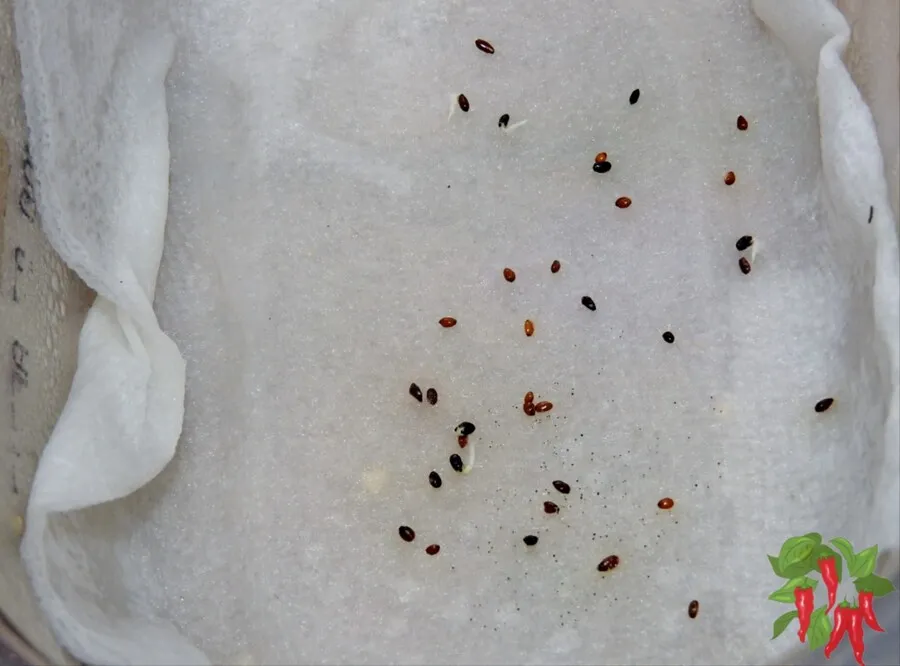
Starting Indoors
To get a head start, sow balloon flower seeds indoors about 6–8 weeks before your last frost. Use a shallow seed tray with well-draining soil. Sprinkle the seeds on top, but don’t cover them, since they need light to germinate. Mist gently to keep moist but not soggy.
- Germination time: 15–20 days
- Temperature: 65–70°F
- Light: Bright indirect or grow lights
Transplanting Outdoors
Once seedlings develop 2 sets of leaves and the danger of frost has passed, transplant them into the garden. Space plants 12–18 inches apart in full sun to partial shade. Handle carefully, their taproots are delicate and dislike disturbance.
Direct Sowing Outdoors
If you prefer, you can sow balloon flower seeds directly in the garden after the last frost. Surface sow and gently press seeds into the soil. Keep moist until sprouts appear, though direct sowing may delay blooms until the second year.
Ideal Growing Conditions
- Light: Full sun to partial shade (at least 6 hours of sunlight for best blooms)
- Soil: Rich, loamy, and well-draining soil
- Water: Keep evenly moist but avoid soggy soil to prevent root rot
- pH: Neutral to slightly acidic (5.5–7.5)
Growing Tips
- Surface sow seeds so they receive light for germination.
- Avoid disturbing roots—balloon flowers dislike transplanting once established.
- Pinch young plants to encourage bushier growth and more blooms.
- Deadhead spent flowers to prolong blooming and reduce self-seeding.
Pruning and Maintenance
Regular pruning keeps balloon flowers looking neat. Trim back leggy stems and remove faded blooms. In late fall, cut plants to ground level once foliage dies back. Add mulch to protect roots during harsh winters, especially in colder zones.
Fertilizing Balloon Flowers
Balloon flowers don’t need heavy feeding. Apply a balanced, slow-release fertilizer in spring as new growth appears. Avoid excessive nitrogen, which encourages foliage at the expense of flowers.
Pests and Diseases
Balloon flowers are generally hardy, but keep an eye out for these issues:
- Slugs & snails: Chew holes in leaves; deter with crushed eggshells or diatomaceous earth.
- Aphids: Found on leaf undersides; treat with neem oil or insecticidal soap.
- Root rot: Caused by waterlogged soil; ensure proper drainage.
- Powdery mildew: Appears in humid conditions; improve airflow and avoid overhead watering.
Best Cultivars to Try
- ‘Fuji Blue’: Classic deep-blue blooms.
- ‘Astra Double’: Compact, double-petaled variety—great for containers.
- ‘Sentimental Blue’: Dwarf type perfect for borders.
- ‘Pink’: Soft, romantic hue.
Balloon Flowers in the Garden
These perennials work beautifully in a variety of garden settings:
- Borders: Use as edging plants for a pop of color.
- Mixed beds: Pair with daylilies, bee balm, or black-eyed Susans.
- Containers: Dwarf types thrive on patios and balconies.
FAQs About Balloon Flower Seeds
Q: How long do balloon flowers take to bloom from seed?
A: Usually 1–2 years. First-year plants may produce limited blooms, but they flourish in the second year.
Q: Do balloon flowers reseed themselves?
A: Yes, they self-sow readily. Deadhead to prevent spreading if you want controlled growth.
Q: Can I grow balloon flowers in pots?
A: Absolutely! Choose dwarf cultivars like ‘Sentimental Blue’ for best results.
Q: Are balloon flowers deer resistant?
A: Yes, balloon flowers are generally deer and rabbit resistant.
Conclusion: Why You Should Try Balloon Flower Seeds
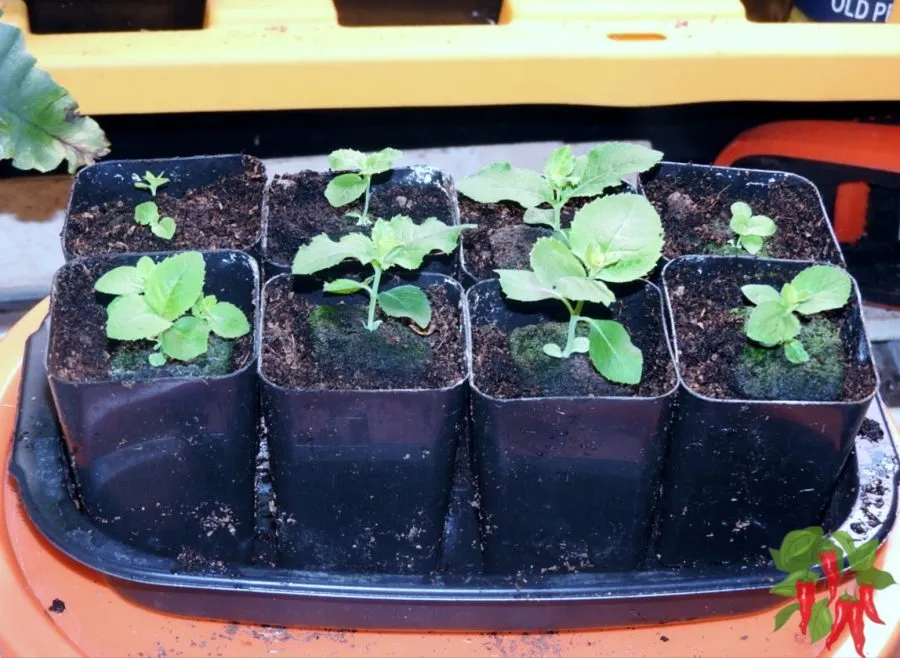
From seed to bloom, balloon flowers bring delight at every stage. Their puffy buds, star-shaped flowers, and easy-going nature make them a perfect addition to any garden.
Whether you plant them in borders, pots, or mixed beds, they’ll reward you with whimsical charm and long-lasting beauty.
So grab a packet of balloon flower seeds and start your own enchanting garden journey today!
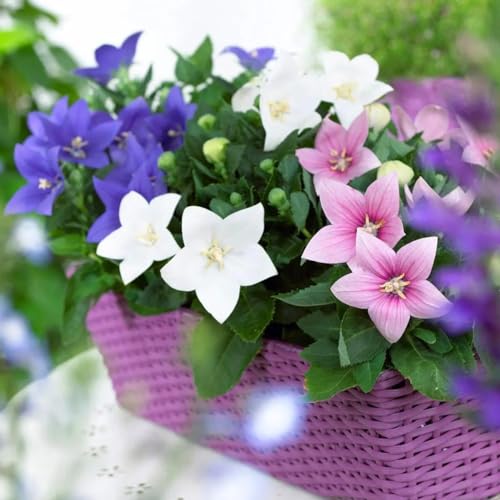
Seeds Balloon Flower Mix (Platycodon Chinese) Perennial Flowers
Read more: The Beginner’s Guide to Starting a Backyard Urban Garden
Visit my Amazon Influencer Page for videos and gardening products Grow Your Own Garden

